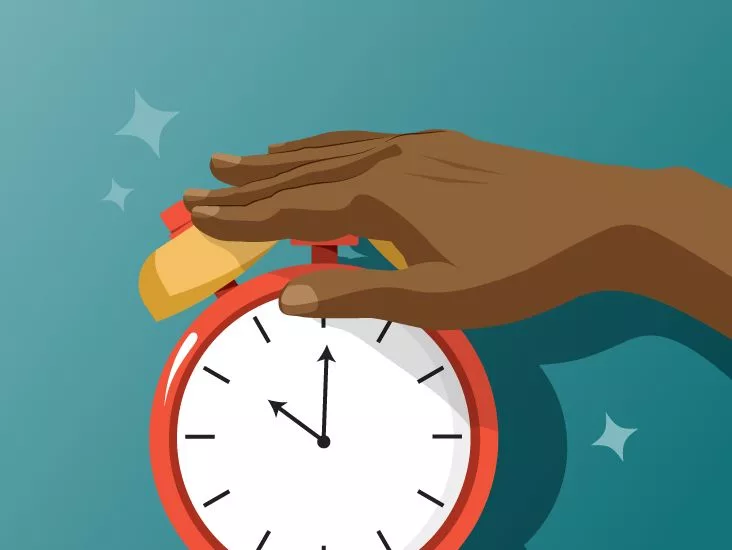If you’ve been diagnosed with myelodysplastic syndrome (MDS) and feel like you’re dragging through each day, you’re not alone. The fatigue that comes with MDS isn’t just “being a little tired” – it’s a deep, relentless drain that can turn even simple tasks into mountain climbs.
Good news: you don’t have to surrender to that exhaustion. Below you’ll find practical, down‑to‑earth tips that you can start using today to conserve energy, boost mood, and reclaim the parts of life that matter most. Let’s dive in, friend‑to‑friend, and see how a few small changes can make a big difference.
Understanding Fatigue
What makes MDS fatigue different?
Fatigue in MDS isn’t the same as the occasional yawning you feel after a long meeting. It’s a persistent, disproportionate feeling of exhaustion that comes on regardless of how much you’ve rested. While anemia is a frequent culprit, research shows that low blood counts only explain a fraction of the tiredness. According to a review in Critical Reviews in Oncology/Hematology (2020), inflammation, oxidative stress, and even psychological factors all play a role.
How common is it?
In a 2007 internet‑based survey of 359 MDS patients, more than 80 % reported severe, chronic fatigue that interfered with daily life. Those feelings were linked to lower health‑related quality of life scores, even when hemoglobin levels weren’t dramatically low.
Who’s most at risk?
Older adults, people with low‑risk IPSS scores, and anyone dealing with additional health issues (like arthritis or depression) tend to notice fatigue more acutely. But remember: every person’s experience is unique, and the same “risk factors” can look very different from one patient to another.
Why Manage It?
Benefits of taking control
When you tame the fatigue monster, you’ll notice sharper focus, better mood, and a greater ability to stick with treatment plans. Studies have shown that patients who actively manage their fatigue report fewer falls, fewer hospital visits, and a higher overall sense of wellbeing.
What happens if you ignore it?
Leaving fatigue unchecked can worsen anemia, trigger depression, and erode quality of life. More importantly, untreated fatigue may lead to missed appointments or medication errors, which can affect the disease trajectory itself.
Assess Your Personal Pattern
Start a simple fatigue journal
Grab a notebook or open a spreadsheet and track four columns each day:
- Time of day – morning, afternoon, evening.
- Activity – what you were doing.
- Energy score (1‑10) – how drained you felt.
- Notes – mood, food, stress, anything unusual.
After a week you’ll likely see patterns: maybe a mid‑afternoon dip, or a spike after a certain chore. Knowing the rhythm lets you plan smarter.
When to call your care team
Reach out if you notice any of these red‑flags:
- Sudden, sharp worsening of fatigue.
- New pain, fever, or infection signs.
- Difficulty concentrating or remembering appointments.
Prepare a few questions for your hematologist: “What tests can help pinpoint why my fatigue spiked this week?” or “Are any of my meds contributing?” A clear, organized journal makes that conversation smoother.
Core Energy‑Conservation Strategies
Sleep hygiene is king
Consistent bedtime and wake‑time (even on weekends) trains your body’s internal clock. Keep the bedroom cool, dark, and free of electronic glow – a simple “no screens 30 minutes before bed” rule works wonders. A solid night’s sleep is the foundation for any other energy‑saving tip.
Activity pacing – do more, less often
Instead of marathon sessions, break tasks into 10‑15‑minute blocks. Work for a short burst, then pause for a micro‑rest (a cup of tea, a deep‑breathing minute). Over time you’ll find you can accomplish more without hitting the “crash” wall.
Delegate, don’t do it all
Ask a family member or friend to help with meals, laundry, or grocery trips. Even a small split – you load the dishwasher, they unload – can save precious energy for the things you truly enjoy.
Smart work adjustments
If you’re employed, discuss flexible hours, remote work, or ergonomic seating with your manager. Knowing your legal rights (ADA, FMLA) can give you confidence to ask for the accommodations you need. According to the National Cancer Institute, workplace modifications are often the difference between thriving and simply surviving at work.
Gentle movement, not “no‑exercise”
Light resistance training, seated yoga, or short walks (even around the house) improve circulation and combat de‑conditioning. A 2023 review in Blood Review found that regular, low‑intensity exercise lowered fatigue scores for many MDS patients.
Nutrition and hydration hacks
Eat small, protein‑rich meals every 3‑4 hours – think Greek yogurt, nuts, or a boiled egg. If anemia is present, iron‑rich foods (spinach, lentils) and vitamin C to aid absorption can help. Keep a water bottle nearby; dehydration sneaks in fatigue like a silent thief.
Beyond Anemia: Lifestyle Tweaks
Fight inflammation
Omega‑3‑rich foods (salmon, walnuts) and antioxidant‑packed berries may lower the inflammatory load that fuels chronic fatigue. The same 2020 review mentioned earlier highlighted inflammation as a key, often‑overlooked driver of fatigue in MDS.
Mind‑body balance
Stress, worry, and anxiety can amplify exhaustion. Try a 5‑minute mindfulness breathing exercise each morning, or spend a few minutes journaling feelings before bed. If you sense that emotional fatigue is weighing you down, consider a counselor or a support group – the AAMDS community offers virtual meet‑ups that many find comforting.
Home‑energy shortcuts
Put everyday items on the first shelf, use a “lazy‑Susan” for pantry staples, and let a robot vacuum take over the floor‑sweeping duty. Small conveniences add up to a noticeable energy reserve each day.
Partnering with Healthcare Professionals
Tests that can clarify the cause
A complete blood count (CBC), ferritin level, vitamin B12, thyroid panel, and inflammatory markers (CRP) are commonly ordered to rule out contributors beyond anemia.
Medication review
Some drugs (e.g., certain antihistamines, sedating pain meds) can worsen fatigue. Bring your medication list to the clinic and ask, “Is anything here likely to sap my energy?”
When blood transfusions help – and when they don’t
Transfusions raise hemoglobin but don’t always translate to less fatigue. A 2023 systematic review in Blood Review concluded that while transfusions improve short‑term physical function, long‑term fatigue often persists, underscoring the need for broader management strategies.
Allied‑health referrals
A physical therapist can craft a personalized pacing plan; an occupational therapist can suggest home modifications; a dietitian can fine‑tune nutrition to support blood health.
Tracking Progress & Adjusting the Plan
Monthly energy check‑in
At the end of each month, review your fatigue journal. Look for trends, celebrate wins (maybe you walked the block without a break this week), and adapt any strategies that felt more draining than helpful.
When life throws a curveball
Stressor events – a new medication, a flu, or a change in routine – can temporarily shift your energy baseline. Re‑evaluate your pacing blocks and rest periods when these happen, remembering that flexibility is part of the plan.
Final Thoughts
Myelodysplastic syndrome fatigue isn’t a permanent sentence; it’s a signal that your body needs smarter energy management. By weaving together solid sleep habits, gentle activity, strategic delegation, and a bit of self‑tracking, you can reclaim hours of usable energy each week. Keep your care team in the loop, stay alert to new warning signs, and lean on trusted resources like the A A M D S community for support.
What’s one change you feel ready to try today? Drop a comment below, share your own tip, or join the conversation in our forum. Together we can turn the tide on fatigue and make space for the moments that truly matter.


















Leave a Reply
You must be logged in to post a comment.